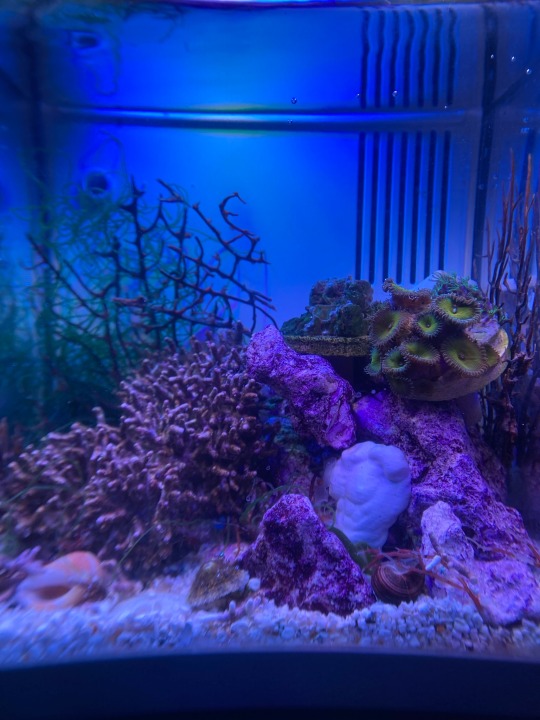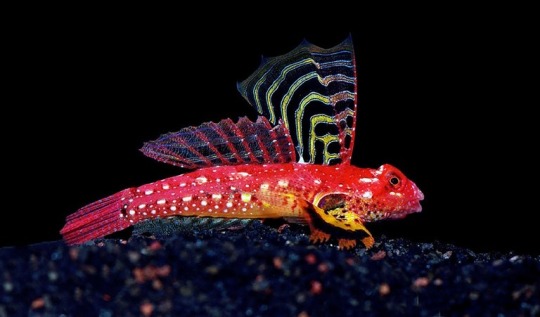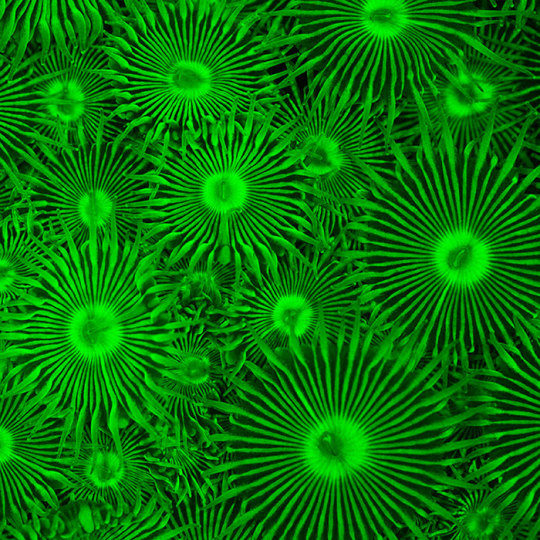#palythoa
Explore tagged Tumblr posts
Text

0 notes
Note
Trick or treat!
Aha! A treat for you of course!!!

*a highly toxic palythoa coral is thrown into your bag. It is unclear how this can be considered a "treat"*
64 notes
·
View notes
Text
it pays to be curious about nature and wildlife because my googling for marine life so i can identify the species i see when i'm out tidepooling at the beach made me learn about Dangerous Toxins i was unaware of.
for one of course that you should be cautious when out tidepooling and exploring in nature in general, because not only you likely don't know what you're encountering, but also you are an observer in an ecosystem and you should be mindful and not mess with the critters and flora you come to see. like you shouldn't come stomping on corals and grabbing and touching shit as you like and by happenstance, you're better off treating as if every thing in this intertidal zone is either toxic or made of porcelain, both for your own and the ecosystem's sake.
but now that i was looking more into atlantic tropical coral life in brazil. well. turns out that the most common species i see while out there are zoanthus and palythoa. which have some of the most potent biotoxins in the entire planet 🤓
since i'm a careful freak with contamination ocd it's likely i'm not gonna die badly tidepooling, it's only fucked up deadly if ingested or it gets through your skin, and apparently most poisonings happen with hobby aquarists fucking with corals. it can even get aerosolized but it's unlikely by just being there at the beach, it's more because of aquarists power washing and boiling and blow torching corals. final observation is that i wish aquarists didn't pretty much only post uv lighting photos of corals because i want to see pictures so i can id the shit i see in the wild better
11 notes
·
View notes
Text


finally broke down and obtained some corals for my little micro reef… the palythoas opened up almost IMMEDIATELY which i’m still sooo stoked about, and the GSPs followed suit not long after!! the zoanthids (the frag further back) are a bit more shy but i took another timelapse of them and i could see the polyps pulsing and shifting so they’re still alive, just taking a little bit longer to settle in. i’m very happy with them and i hope they thrive!!!
#i’ve got more on the way already 😭 just a little bitty pulsing xenia frag#and a yellow ball sponge#7g floating nano reef
23 notes
·
View notes
Text
There is good reason to presume many of my readers are familiar with TFH or Tropical Fish Hobbyist Publications, and the name of their prolific author, Herbert R. Axelrod. Axelrod wrote a great many works about tropical freshwater fishes, and he also penned a text on corals in 1997. During that decade, TFH began printing books with colorful, glossy pages, and A Guide to Corals for the Mini-Reef Aquarium is such an example

Each page features photographic and brief textual references to a small number of corals Sometimes though, the information is a little off. Bubble corals cone from protected, turbid environments, and prefer lower flow than Axelrod tells us. They also have lower light requirements, and generally like the same sort of tank environments that 'mushies' do.
Did you know that the bubble structures of Plerogyra and Physogyra, are living, protective greenhouses, that evolved to accommodate symbiotic algae? The format of this book, which is presented as an abridged work, does not really allow for such facts in its text, because of its inherent space limitations. But the book achieves what it sets out to communicate.

Despite the matter-of-fact tone of the volume, some of the photographs can be very aesthetic. On one page, the texture of live Pachyseris really stands out. Other pages feature pleasant shots of Caulastrea, Catalophyllia and other beauties.
Yet certain genera are curiously absent. As far as I can remember, there are no Goniopora sp. in the pages, nor do the pages featuring octocorals include the rather popular purple gorgonians, belonging to the easily grown branching genera, Muriceopsis and Pseudoptetogorgia.
A number of gorgonian species are indeed featured, but strangely not those that are most often purchased today. Which is understandable for a book from 1997. Similarly the age of the book probably explains why the reasonably familiar Duncanopsammia isn't included. Duncan coral was still obscure, back in the 1990s.

Axelrod does not divide the sceractinian corals into the SPS and LPS categories, which refer only to polyps size, and have no basis in evolutionary relationships. Polyps size can vary even within a coral genus. And different SPS and LPS do vary in their flow and lighting requirements - and yes it is possible to have them flourish in the same aquarium.
Another page and another error, in this case, the statement that Pocillopora requires high lighting and water flow. Although these SPS type stony corals do 'colour up' better under strong end lighting, they grow fine at the moderate light levels, more usually associated with 'LPS'. Similarly moderate water flow is appropriate for corals of this genus
By the way, many reef aquarists are overestimating how much flow 'SPS' actually need, even the Acropora genus, which have physiological difficulties in low flow. Many Asian aquarists are growing colonies of 'high flow' corals, in tanks with lower flow than western aquarists usually assume necessary

Although the modern reef hobby was taking shape in 1990s America, the current interest in morphs of Zoanthus sp. was not yet around. Still Axelrod represents a few 'zoa' types, and correctly praises their hardiness. Which is far from untrue, but sometimes 'zoas' either or die back in aquariums, and the solution is usually to dose extra iodine.
What he doesn't mention is that, unlike their Palythoa cousins, Zoanthus are poorly equipped to resist attack, and that their hardiness evolved through their evolutionary survival strategy, of retreat into difficult environments, such as intertidal rock pools, where their predators are few. Intertidal corals naturally face strong and relatively fast swings of environmental parameters, but have little need to defend themselves against the coral eaters more common on the reef.

Zoanthids and corallimorpharians are also popular aquarium anthozoans, and Axelrod includes them in his book, but what exactly is a coral anyway? Arguably these organisms blue the line between anthozoans that are known as anemones, and those that we call corals. Books on aquarium corals have a habit of omitting the actinarians and cerianthids, whilst including the more distantly related octocorals alongside the scleractinians.
Octocorals are the clade of anthozoans that includes genera like Sinularia, Sarcophyton, and the gorgonians. Whereas the scleractinians,or stony corals, are the main reef building organisms of tropical, shallow seas. For this reason they are actually called 'true corals', although the word 'coral' at first referred to the gorgonians.
Actinarians are the 'true' sea anemones, such as those famous for hosting clownfishes. This clade excludes the cerianthids, or tube anemones, and other anthozoans which aresonetimes called anemones. Another distinct clade of anthozoans, called cerianthids, are commonly known as anemones, though they have no special kindhip to actinarians. They do however share their form of large, solitary, 'standalone' polyps, rather than building colonies as do most 'corals'.
Corallimorpharian polyps are morphologically very, very similar to those of stony corals, but due to their lack of a hard skeleton, they are often regarded as anemones or soft corals. A similar confusion exists around the zoanthids, which are also outside the two main 'coral' clades, and are not true sea anemones.
Octocorals are in fact more distantly related, to the stony corals or scleractinians, than are sea anemones. Thus it might be argued that anemone-ness is defined by them not forming colonies, as do soft and stony corals, and that the status of coral-ness is not phylogenetic. But there are a number of non-colonial scleractinians, such as Fungia, and no one questions that they are corals.
Because the book is from 1997 a number of corallimorpharian morphs are assigned to the defunct Actinodiscus. This genus name was once in wide use in aquarium literature, but it is a junior synonym of Discosoma these days. And a popular blue morph of Discosoma is assigned to a species, A. coeruleus, that was never formally described. Nonetheless the morph 'A. coeruleus' used to be presented in aquarium books as a good, well recognised, and valid species.
In terms of care, Discosoma or 'Actinodiscus' seem to prefer lower lighting and flow, than do the related Ricordea and Rhodactis colonial polyps. The book features a further genus, Amplexidiscus, that might belong within Rhodactis despite its enormous size, and fish catching habits. Not all corals and anemones are suitable for housing alongside fishes.

#aquarium books#out of print books#corals#marine aquariums#reef aquariums#saltwater aquariums#corals for the mini-reef aquarium
0 notes
Text






Reds under the sea ❤️
#beauty under the waves#ocean#ocean life#sea#sealife#fish#fish photography#fish lover#ocean lover#red#aesthetic#red aesthetic#red coral#coral#Palythoa#flame hawk fish#white tailed kole tang#ruby red dragonet#discoma mushroom#sea creature#marine creatures#marine animals#marine wildlife#marine biology#mood
536 notes
·
View notes
Photo

We are happy to announce the publication of a scientific paper analyzing the presence and potency of palytoxin (PLTX) in Palythoa spp. and Zoanthus spp. Zoantharians conducted by the Mediterranean Institute of Oceanography and Coral Biome in Marseilles, France. PLTX is one of the most potent toxins known on the planet. It is an extremely large and complex organic compound that has been described by biochemists as the ‘Mt. Everest of organic synthesis’. An organism that naturally produces large amounts of PLTX is of great importance for research scientists to better understand its pharmacology. PLTX has been found to have toxic effects on head and neck tumors, and therefore warrants further pharmaceutical investigation.
Initially, this compound was blue-prospected in Hawaii where native Hawaiian people used the the mucous of Palythoa found in a very specific (and taboo) tide pool (known as limu-make-o-Hana, the ‘seaweed of death of Hana’) to coat their spear points before battle. So taboo was this tide pool for outsiders, that when scientists sampled the Palythoa in 1961, they found their lab burned to the ground on the same day. A reminder to scientists to respect native wisdom, culture, and practices when performing science on other cultures’ land!
In this paper we found that an undescribed species (Palythoa aff. clavata) we sampled from PortMiami in 2012 was found to have five times the concentration of the notorious Hawaiian species Palythoa toxica. The experiment also tried to determine whether PLTX was produced by symbiotic microbial symbionts / zooxanthellae, or by the organism itself. Highest concentrations of PLTX were found within the tissue itself, and isolated cultures of zooxanthellae from these polyps failed to produce PLTX in the laboratory. This suggests, but does not confirm, that the Palythoa polyps themselves are producing this toxin. While the mechanism of its biosynthesis remains unknown, it highlights how Miami’s urban marine environs hold important scientific discoveries still waiting to be uncovered. Read the paper – ‘Symbiodiniaceae diversity and characterization of palytoxin in various zoantharians (Anthozoa, Hexacorallia)’ – here: Undescribed Soft Coral Native to Miami Produces High Quantities of Deadly Organic Compound Palytoxin
#Coral Morphologic#coralmorphologic#Palytoxin#Mediterranean Institute of Oceanography#Palythoa#Zoanthus
7 notes
·
View notes
Photo

#Palythoa#Zoantharia#ocean#sea#deep sea creatures#deep sea#underwater#anenome#purple#green#lime green#neon#water#aes#Aesthetic#purple aesthetic#green aesthetic#ocean aesthetic
108 notes
·
View notes
Photo

(via GIFER)
3 notes
·
View notes
Text


Got two cool new corals. A palythoa grandis and a really green mushroom! The paly is really cool. It's way bigger than other palys and I love the color!!
20 notes
·
View notes
Text






Color of the year inspiration 🔥
#color of the year#inspiration#inspo#beautiful#favorite#nail blog#collage#coral#oceanic.global#palythoas#@tidalgardens#palythoa#paint#coral paint#living coral#pantone#coty#pantone color of the year#pantone color 2019#@ohga#couch#creyes studio#furniture#@missanadesign#coral reef#@abduzeedo#interior design#bedroom#interiors
18 notes
·
View notes
Note
you know how freshwater tanks are commonly kept with dense plant forests? you should do that with coral
sort of the goal!! it’s not entirely analogous as corals are animals and don’t always like being too close together (as well as needing food and supplements of minerals and other nutrients, especially in large concentrations in a smaller tank like i’ve got) so i’m filling out a lot of the empty space on my rockwork with macroalgae (saltwater plants) but my hope is to have a lot of really nice looking zoanthid and palythoa colonies all over the hardscape with a handful of patches of other soft corals growing out like “trees” (got a really nice cespitularia, an abundance of xenia, a ‘green leather coral’ that i’m pretty sure is some kinda kenya tree and another ‘magic finger leather coral’ that didn’t specify much about species so i’m treating it the same as i treat my cespitularia) with some mushroom corals here and there too because i like em… i’m evidently typing too much cuz my app is about to shit itself to death but give me a moment and i can post pics of the current layout and the eventual plan if all goes well and the polyps grow out ok
9 notes
·
View notes
Photo

This #purple #peopleeater #paly #palythoa #frag is only $29. But with our special coupon code RAP15, this coral, along with every coral on our site, is 15% off! 😸✌️ Hurry sale ends Oct16th. Www.uniquecorals.com. #allmymoneygoestocoral
6 notes
·
View notes
Text









Zoanthid and Palythoa Appreciation 💙
#beauty under the waves#ocean#sea#marine creatures#marine biology#marine life#zoanthid#zoa#palythoa#coral#animal#marine animal#underwater#saltwater#tropical#reef
123 notes
·
View notes


